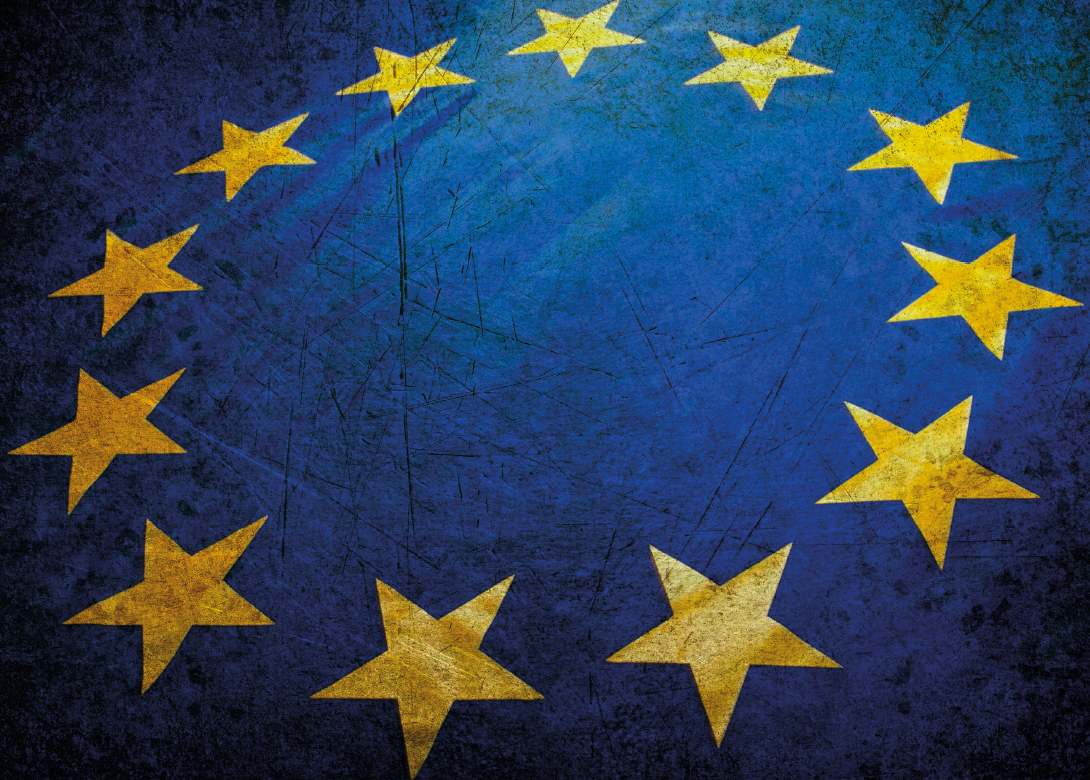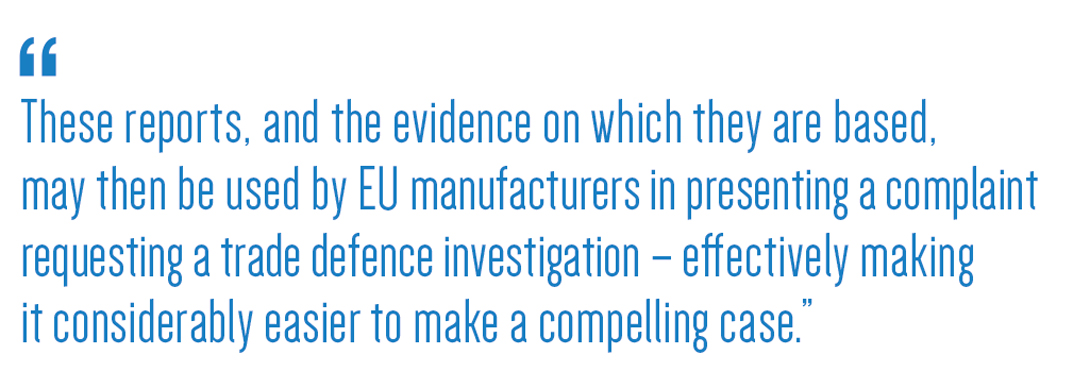
On 20th December 2017 the European Union brought into force Regulation 2017/2321, which amends its methodology in anti-dumping and anti-subsidy investigations, in sectors and countries where there is deemed to be significant distortion to market forces, even if the country in question is a WTO member.
The regulation is the culmination of extended negotiations between the European Commission, Council and Parliament and includes a radical change, driven by Parliament, to take into account social and environmental factors in deciding how to calculate normal values, the basis for ultimate anti-dumping duties.
The new methodology requires the Commission to research, publish and regularly update reports on economies/sectors where it “has well-founded indications of the possible existence of significant distortions”. These reports, and the evidence on which they are based, may then be used by EU manufacturers in presenting a complaint requesting a trade defence investigation – effectively making it considerably easier to make a compelling case.
The amendment regulation clarifies what constitutes significant distortions. This is the case, it says, “when reported prices or costs, including the costs of raw materials and energy, are not the result of free market forces because they are affected by substantial government intervention”. It continues by listing other elements including:
+ The market being to a significant extent served by enterprises, which operate under the ownership, control or policy supervision or guidance of the authorities of the exporting country.
+ State presence in firms allowing the state to interfere with prices or costs.
+ Public policies discriminating in favour of domestic suppliers.
+ Distortion of wage costs.
+ Access to finance granted by institutions implementing public policy objectives or nor acting independently of the state.
Where it is deemed inappropriate to “use domestic prices and costs in the exporting country due to the existence in that country of significant distortions… the normal value shall be constructed exclusively on the basis of costs of production and sale reflecting undistorted prices or benchmarks.” Options available to the investigation include “corresponding costs of production and sale in an appropriate representative country with a similar level of economic development as the exporting country”. A key point for the European Parliament was that in doing so the Commission should give preference “to countries with an adequate level of social and environmental protection”. Alternative methodologies include using appropriate, undistorted international prices, costs, or benchmarks or domestic costs, but only where it can be positively established they are not distorted.
As Fastener + Fixing reported in November, the Chinese Commerce Ministry has already stated that the EU’s approach ‘lacks the legal basis of WTO rules’ and accused it of “blurring the disparities between market and non-market economies”. That suggests China may well refer the new regulation to the WTO. However, the EU will almost certainly be robust in defending a hard-won consensus, which suggests any WTO dispute proceedings will be long-winded. In the meantime, EU manufacturers are likely to be more confident of achieving support for an anti-dumping complaint and that any consequent investigation would lead to stringent duty levels. The new regulation also includes a clause that provides the European Parliament with levels of oversight on the implementation of the regulation and requires the Commission to report annually to both Parliament and Council.
The new regulation also includes a clause that provides the European Parliament with levels of oversight on the implementation of the regulation and requires the Commission to report annually to both Parliament and Council.
A full copy of the new regulation is available from the Official Journal in all EU languages – this link is to the English version:
http://eur-lex.europa.eu/legal-content/EN/TXT/PDF/?uri=OJ:L:2017:338:FULL&from=EN
Further changes planned
On 5th December the European Commission announced there had been a landmark deal between itself, the Council and Parliament on the wider modernisation of EU trade defence instruments. Only limited details have been released but the new rules are said to make EU trade defence instruments “more effective, transparent and easier to use for companies, and in some cases will enable the EU to impose higher duties on dumped products”. The new rules would shorten the current nine month investigation period for the imposition of provisional measures – probably to seven months. The significant change, however, will be to the way in which the Lesser Duty Rule is adapted in cases “targeting imports of unfairly subsidised or dumped products from countries where raw materials and energy prices are distorted”.
A timescale for these new rules to be brought into law has so far not been announced but the Commission will presumably be keen to bring to conclusion a process that was originally initiated in 2013. 

Having held senior management roles in leading automotive and fastener businesses, Phil joined Fastener + Fixing Magazine as editor in 2002. Convinced there is no substitute for ‘being there’, over 17 years of visits and interviews around the world means he has accumulated an extraordinary knowledge and perspective of the global fastener industry, reflected in his incisive and thought provoking reporting.
Don't have an account? Sign Up
Signing up to Fastener + Fixing Magazine enables you to manage your account details.